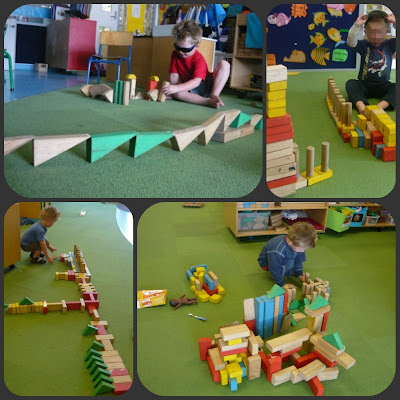As I look back on my blog journey, It is hard to believe how much I have learned in such a short space of time. I really enjoy technology and the latest gadgets and gizmos that are available to us now to make our lives easier and also entertaining (when I think of my Ipod, WII, DVD and my karaoke machine!) I thought that this would equip me well for this task but as my knowledge grew, I realised that I actually knew only a fraction of what technology was and also involved. I think one of the main revelations in my learning is that technology is not just an object which you learn how to operate, learn what to use it for but it can also be a process. It was quite hard to get my head around this concept initially, but the more I started to try and relate it to what I was noticing when observing children by ‘seeing it in action’ I finally the penny dropped and I was really excited about it and tried to explain it on some of my blogs to share with others. Smorti (1999, p5) sums it up perfectly when she states “Technology is about helping people and solving problems.” As they engage in all sorts of technology, it is a way of figuring out and understanding the world around them. By supporting children in their use of technology, we are helping to build a knowledge bank of different ways in which they can approach a problem, develop their ideas and discover creative solutions in their everyday lives.
I also learnt so much from the feedback that I received on my blogs. Krista made me think about how I was enabling the children to take on the role of “researcher” as they decided what they wanted to look at and extend upon on using the internet. She made me realise that using technology in this way and letting them take control of their own learning made the whole process more meaningful to each individual child. I believe that sometimes I overlook this when using the computer and often to extend their interest in something, I will google information myself but Krista has made me rethink my actions. By involving children in this process, I am indeed practicing my belief that children truly are competent and confident learners and CAN do it just given the chance!
This philosophy also encouraged me to try using the drill with the children in response to an interest that was shared. I am so glad my blog entry has given Nikole and Lisa the confidence to try drilling with the children in her own centre too. Although it seemed quite scary at first, I believe that by making time to let the children explore the drill and talk about what it is, what we use it for and how it works really supports the childrens understanding about the safety of the drill. On further reflection I think it is also important to involve your work colleagues when introducing new experiences like this because as well as helping to supervise, they can also learn and become confident in providing opportunities like this in the future which will be wonderful for our children. Knowledge after all is to be shared, that is how we all learn!
It was really interesting to read Padma’s feedback as she also did a blog on blocks and she commented on how she focussed on how blocks fostered technological knowledge. This made me think about how we as educators really do see things from different perspectives but with the help of colleagues, you can actually build a bigger picture of the learning taking place. I really appreciated Lucy’s comment about not intervening when R (who was playing with the blocks) told his peers to leave it. She understood the fact that R really needed the time and space to work out his developing design, but he needed to do this alone. This was right for him and as teachers we must respect that children sometimes need to work alone as they work things out without making a child share.
By being able to read this feedback, I really felt supported in my learning journey. By sharing experiences with each other it can only improve our daily practice with children. Sometimes on the job, there is just no time for important conversations like this to take place but I believe it is a necessity to help us grow in this profession. Penrose (2006) states that “Adults need feedback on their learning. Feedback from the group or tutor is necessary to gauge progress. Constructive criticism and positive reinforcement from others help to enhance learning and to encourage adults to continue this process” (p.122). By using blog technology we were able to co construct our learning and I feel that because of this, I have learnt so much in such a short space of time and I have really valued the experience.
Reference List
Penrose, P. (1998). Take another look (2nd ed.) Tirohia Anō: A guide to observing children. He momo ārahi ki te tiro ngā tamariki. New Zealand Playcentre Federation.
Smorti, S. (1999) Technology in Early Childhood. Early Education, No.19 Autumn 1999.














